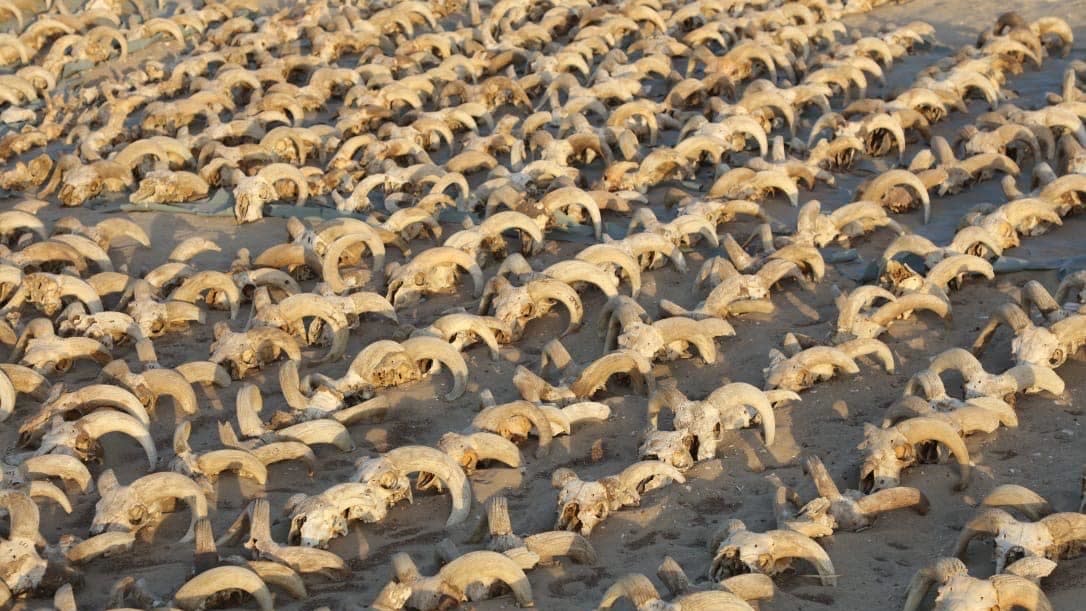Researchers Find 2,000 Rams’ Skulls Inside Ancient Egyptian King’s Temple

A group of American archaeologists from New York University has made two important discoveries while working in the area of the temple of Ramses II, uncovering an ancient building and more than 2,000 mummified rams’ heads from the Ptolemaic period.
The discoveries were made in a newly discovered warehouse room within the northern area of the temple—based in the ancient city of Abydos, around 270 miles from Cairo—with some dating back at least 4,300 years.
Among the ram heads, the Egyptian Ministry for Tourism and Antiquities said in a statement, were a group of goats, dogs, wild goats, cows, deer, and an ostrich.
Ramses II, also known as Ramesses the Great, is known to be one of the great rulers of the ancient Egyptian era, dominating lands and expanding Egypt’s rule during its most powerful period. He reigned from 1279 to 1213 BC, during what is known as the New Kingdom period.
The offerings are believed to have been left 1,000 years after the death of the Egyptian pharaoh.
The discovery of the rams’ heads is critical in understanding the two millennia following Ramses’ death, said Sameh Iskander, head of the mission, as it suggests the pharaoh was still worshipped for years to come.
“The discovery of this large number of embellished rams may have been used as offerings during an unprecedented worship of the rams in Abydos during the Bipidus period, in addition to suggesting that the sanctification of King Ramses II in Abydos remained after his death for a thousand years,” Iskander said.
In ancient Egypt, the ram was an important symbol of power and fertility.
Along with the animals, a “huge,” palatial structure from the Sixth Dynasty era was also discovered, with several statues, papyri, ancient tree remains, leather garments, and shoes inside.
The structure, with a “distinctive and unique architectural design featuring its huge thick walls about five meters in width,” could help “re-establish the sense of the ancient landscape of Abydos before the construction of the Ramses II temple,” Iskander said.
Get the Daily Beast's biggest scoops and scandals delivered right to your inbox. Sign up now.
Stay informed and gain unlimited access to the Daily Beast's unmatched reporting. Subscribe now.

 Yahoo News
Yahoo News 
